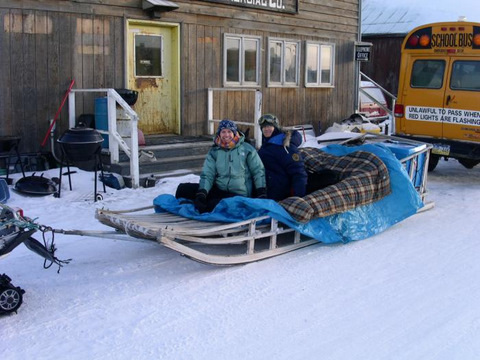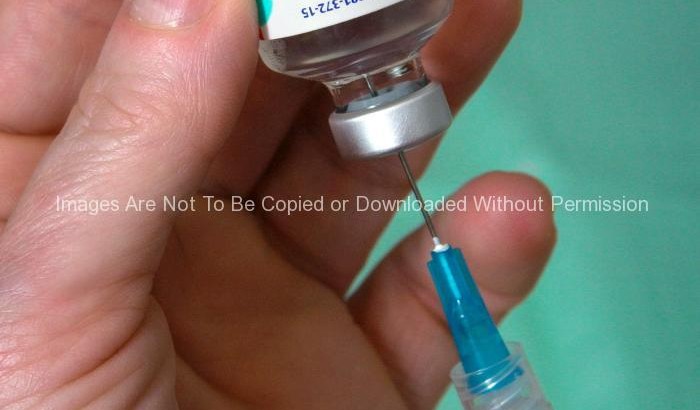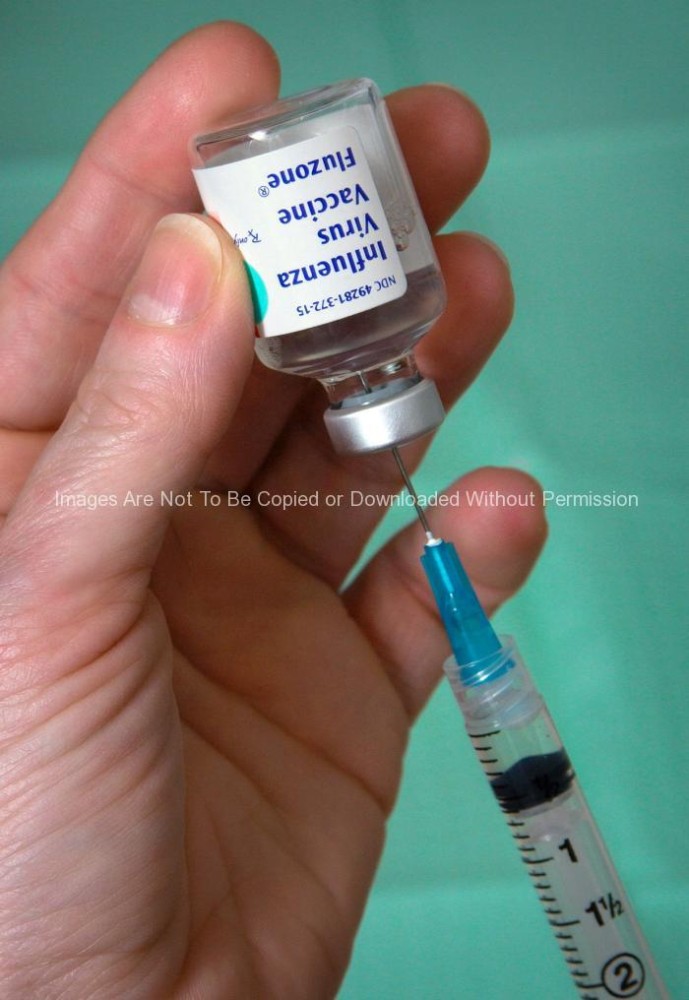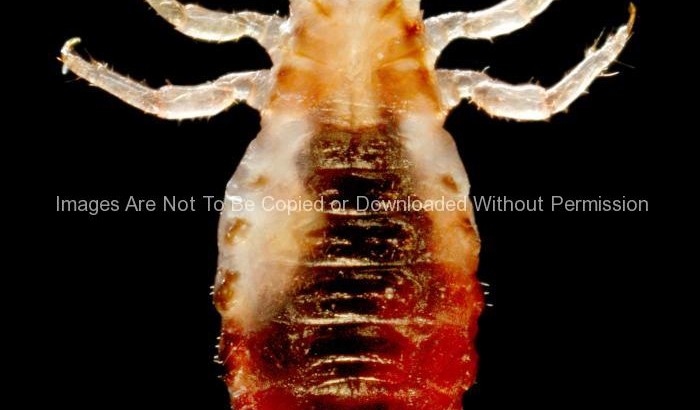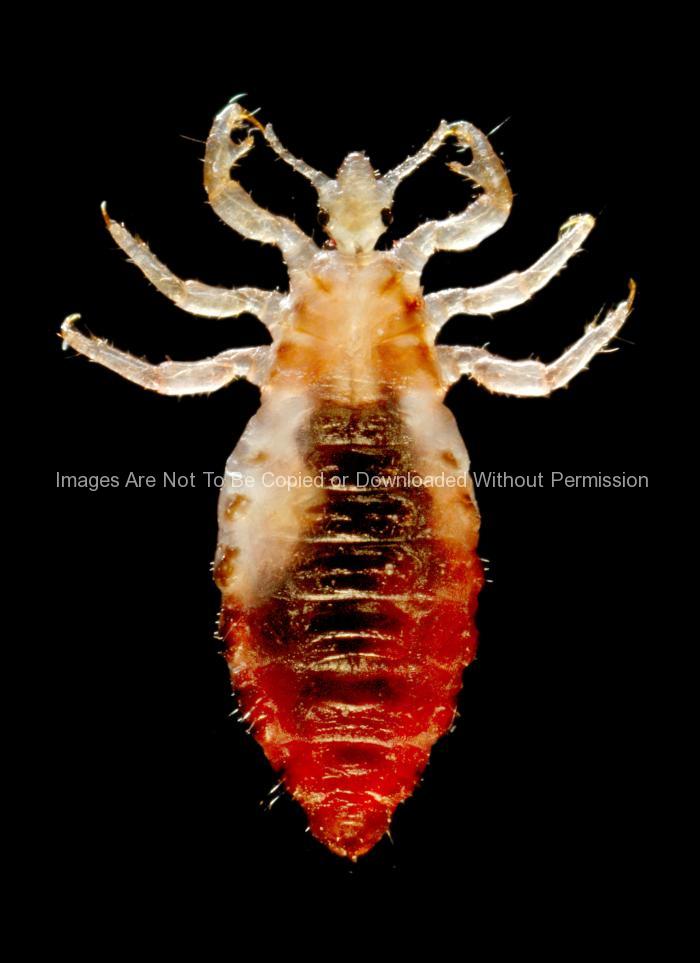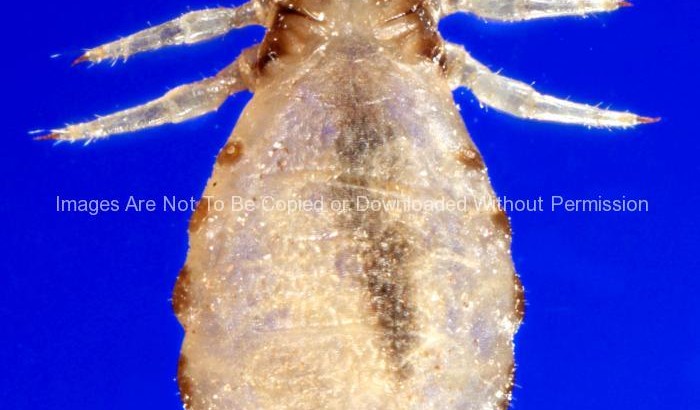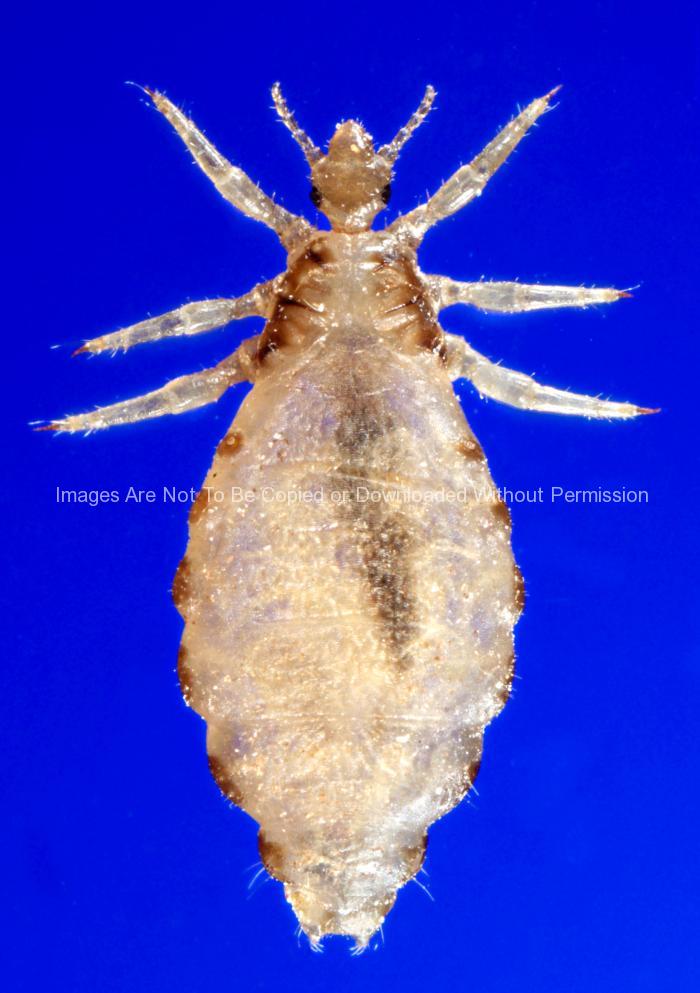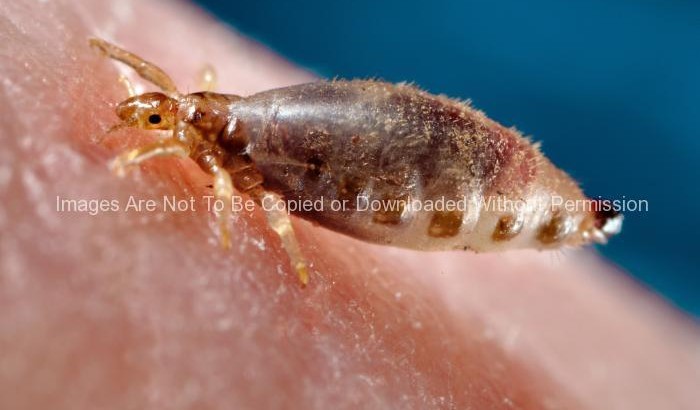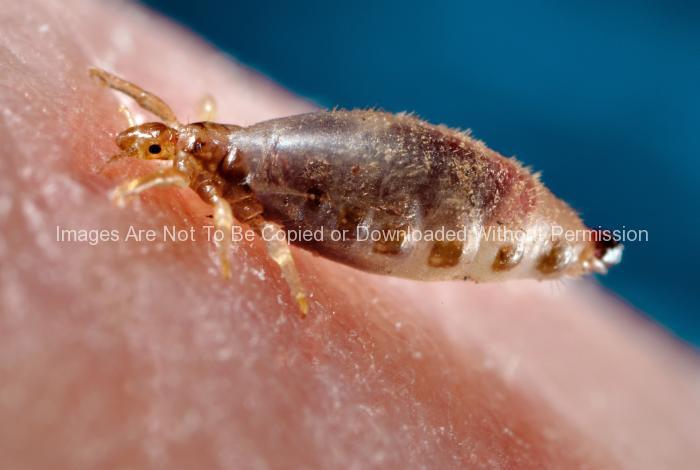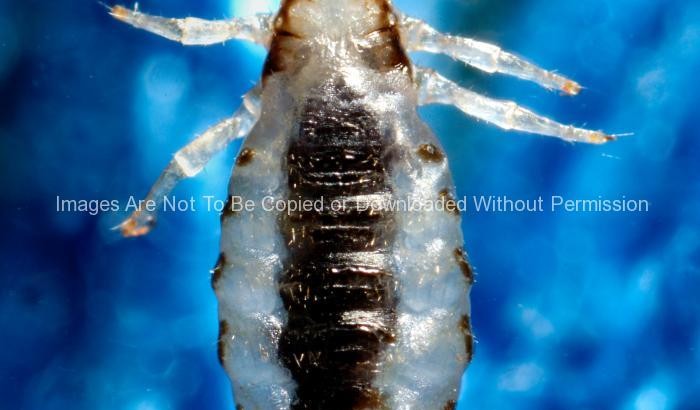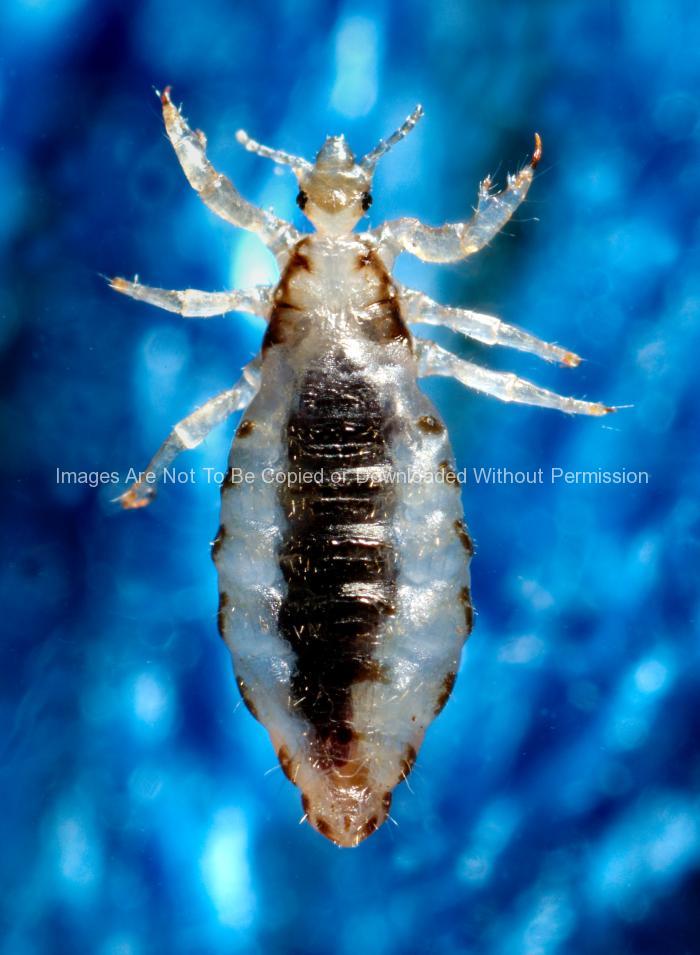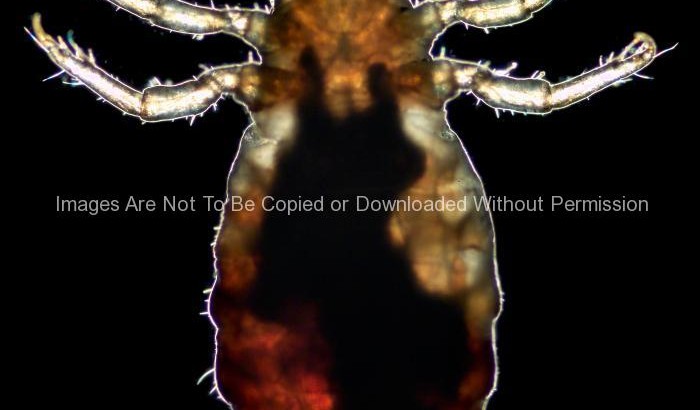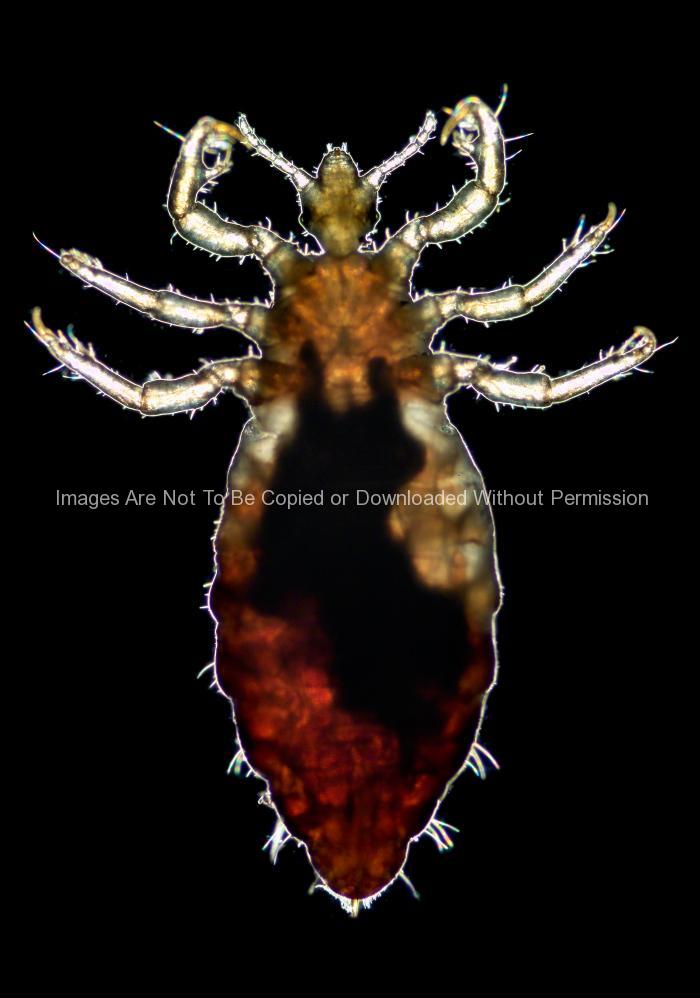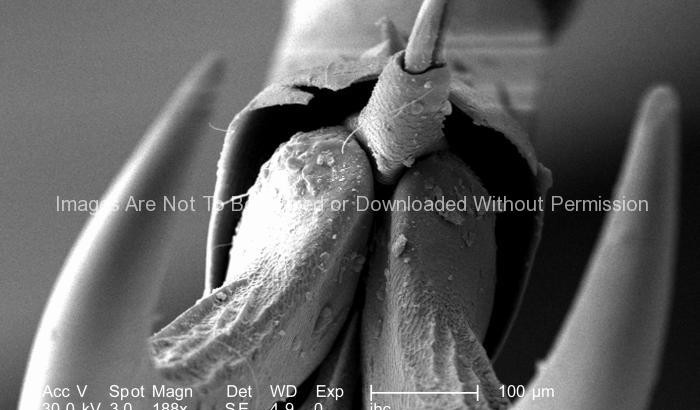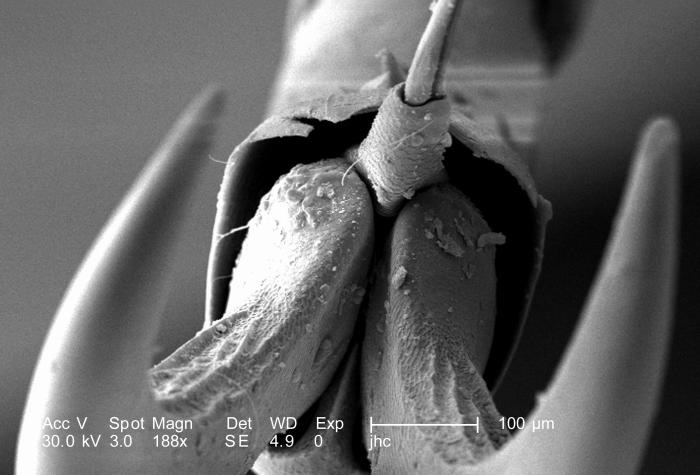This photograph depicted a dorsal view of a male body louse, Pediculus humanus var. corporis. Some of the external morphologic features displayed by members of the genus Pediculus include an elongated abdominal region without any processes, and three pairs of legs, all equal in length and width. The distal tip of the male’s abdomen is rounded, whereas, the female’s is concave.
Body lice are parasitic insects that live on the body, and in the clothing or bedding of infested humans. Infestation is common, found worldwide, and affects people of all races. Body lice infestations spread rapidly under crowded conditions where hygiene is poor, and there is frequent contact among people. Note the sensorial setae, or hairs that cover the louse’s body, which pick up, and transmit information to the insect about changes in its environment such as temperature, and chemical queues. The dark mass inside the abdomen is a previously ingested blood meal.
What do body lice look like?
There are three forms of body lice: the egg (sometimes called a nit), the nymph, and the adult.
Nit: Nits are body lice eggs. They are generally easy to see in the seams of clothing, particularly around the waistline and under armpits. They are about the size of this mark ( ’ ). Nits may also be attached to body hair. They are oval and usually yellow to white. Nits may take 30 days to hatch.
Nymph: The egg hatches into a baby louse called a nymph. It looks like an adult body louse, but is smaller. Nymphs mature into adults about 7 days after hatching. To live, the nymph must feed on blood.
Adult: The adult body louse is about the size of a sesame seed, has 6 legs, and is tan to grayish-white. Females lay eggs. To live, adult lice need to feed on blood. If the louse falls off of a person, it dies within 10 days.





